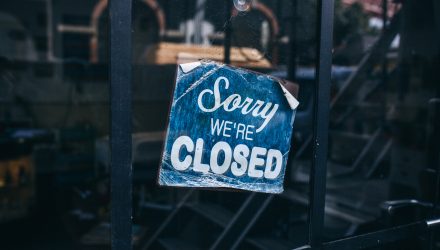According to research firm CFRA, ETF assets have risen by 90% the last five years, but when delving deeper into those numbers, another stat jumps out in particular: about 25% of ETFs have shut down shop. However, market experts feel this only makes for a healthy ETF industry.
“Asset managers have seen the money going in. They’re launching products,” said Todd Rosenbluth, senior director of ETF and mutual fund research at CFRA during a recent segment on CNBC’s “ETF Edge”. “After a couple of years, if the products don’t reach $100 million, which is a nice threshold — 89% of the closures had less than $100 million in assets under management — you’ll see closures.”
“Invesco made a couple of acquisitions. They took a look at their product lineup. Some of those strategies no longer made sense under the Invesco brand, and so we saw 20 or so ETFs that closed in early 2019. That’s just healthy,” Rosenbluth added. “That’s a maturing part of the industry. But we’re also seeing money going into the largest of the products and the cheapest of the products. That trend continues.”
Per a MarketWatch report, out of the “1,662 ETFs that were listed on U.S. exchanges as of Dec. 31, 2014, 399 have closed, a 24% reduction in the number of ETFs on the market, CFRA reports. This happened as the biggest ETFs just kept getting bigger: Now, just 100 funds account for 83% of total asset growth in the ETF space, the research firm said.”
What’s driving closures in the ETF space? Market demand is one factor—simply giving the people what they want.
“Ultimately, … this is all client-driven,” said Dan Draper, managing director and global head of ETFs at Invesco. “We want to make sure we have the best solutions run properly for our clients broadly. But the ETF vehicle is also a very innovative wrapper.”
“This is also a message to investors that for ETF issuers, it can be low barriers to entry, but a very high barrier to success,” Draper added. “So, being with larger providers that have all the infrastructure that can really support the products long term is crucial.”
The forthcoming Rule 6c-11 under the Investment Company Act of 1940, or simply the “ETF Rule,” will cut a lot of bureaucratic red tape and smoothen the path for more firms to create ETFs. It will be interesting to see how CFRA’s numbers shift in the coming years to reflect a new trend or substantiate the current trend.
For more market trends, visit ETF Trends.


